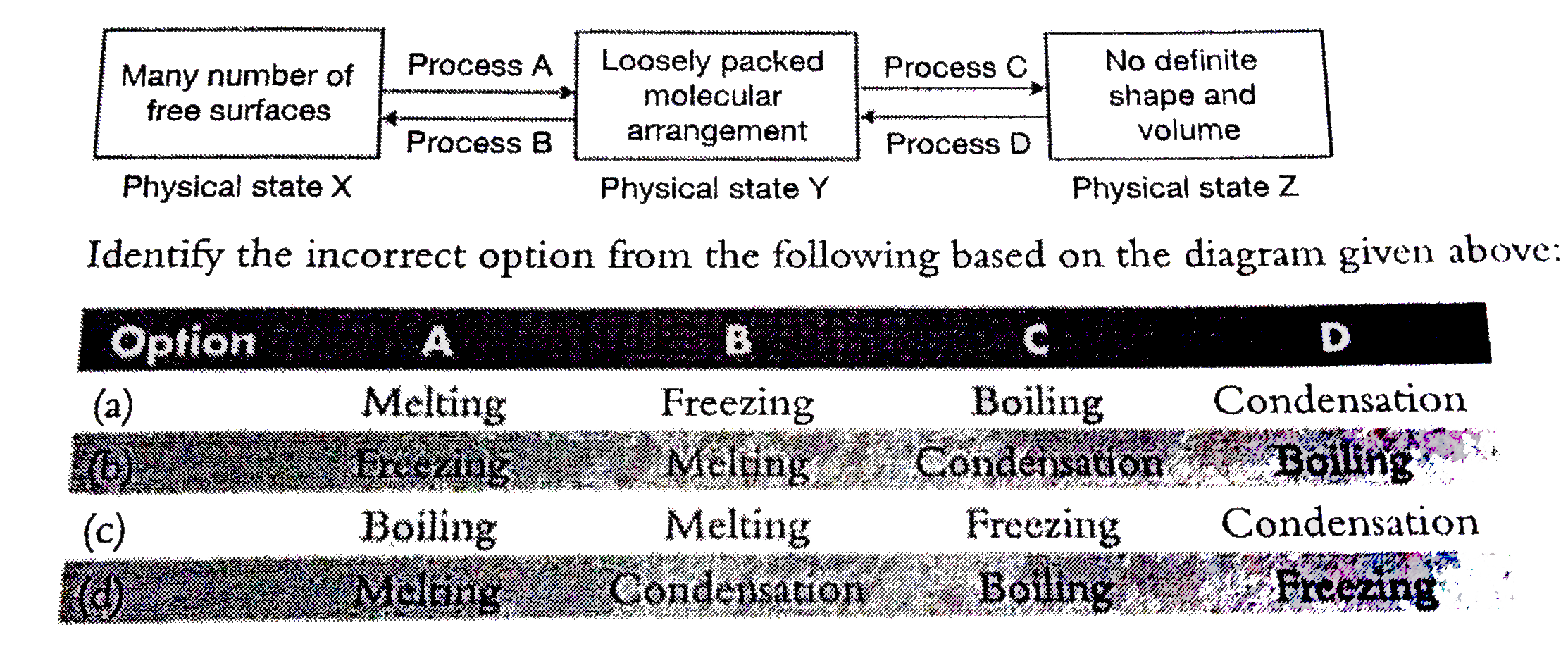Identify the correct option from the following.

A
(a)-s, (b)-p, ( c)-r, (d)-q
B
(a)-r, (b)-s, ( c)-q, (d)-p
C
(a)-r, (b)-p, ( c)-s, (d)-q
D
(a)-s, (b)-p, ( c)-q, (d)-r
Video Solution
Text Solution
The correct Answer is:A
(a)-s, (b)-p, ( c)-r, (d)-q
|
Updated on:21/07/2023
Topper's Solved these Questions
- BOOK - CENGAGE BIOLOGYCHAPTER - IMPROVEMENT IN FOOD RESOURCES : PLANTSEXERCISE - CHALLENGING EXERCISE4videos
IMPROVEMENT IN FOOD RESOURCES : PLANTS
- BOOK - CENGAGE BIOLOGYCHAPTER - IMPROVEMENT IN FOOD RESOURCES : PLANTSEXERCISE - CONSOLIDATED EXERCISE (MCQ)27videos
IMPROVEMENT IN FOOD RESOURCES : PLANTS
- BOOK - CENGAGE BIOLOGYCHAPTER - HEALTH, HYGIENE, AND DISEASES EXERCISE - CHALLENGING EXERCISE2videos
HEALTH, HYGIENE, AND DISEASES
- BOOK - CENGAGE BIOLOGYCHAPTER - TISSUES EXERCISE - CHALLENGING EXERCISE2videos
TISSUES
Similar Questions
Knowledge Check
- Question 1 - Select One

Identify the incorrect option from the following based on the diagram given above.AABCDMeltingFreezingBoilingCondensationBABCDFreezingMeltingCondensationBoilingCABCDBoilingMeltingFreezingCondensationDABCDMeltingCondensationBoilingFreezing - Question 2 - Select One or More
Identify the correct options :
Asin3αcos2α>0 for α∈(3π8,23π48)Bsin3αcos2α<0 for α∈(13π48,14π48)Csin2αcosα<0 for α∈(−π2,0)Dsin2αcosα>0 for α∈(13π48,14π48) - Question 3 - Select One
Select the correct option from the following
Achristiaan Huygens a contemporary of newton established the wave theory of light by assuming that light waves were transverseBMaxwell provided the compiling theoretical evidence that light is transverse waveCThomas young experimentally proved the way behaviour of light and Huygen's assumptionDall the statements given above correctly answers the question what is light



